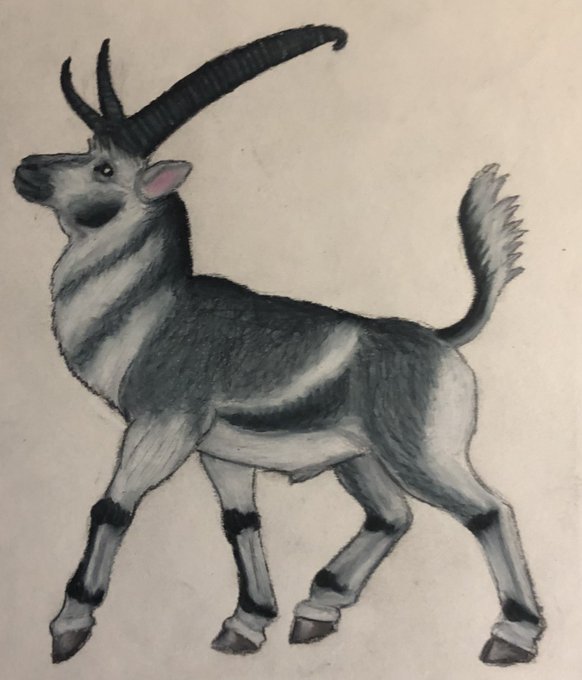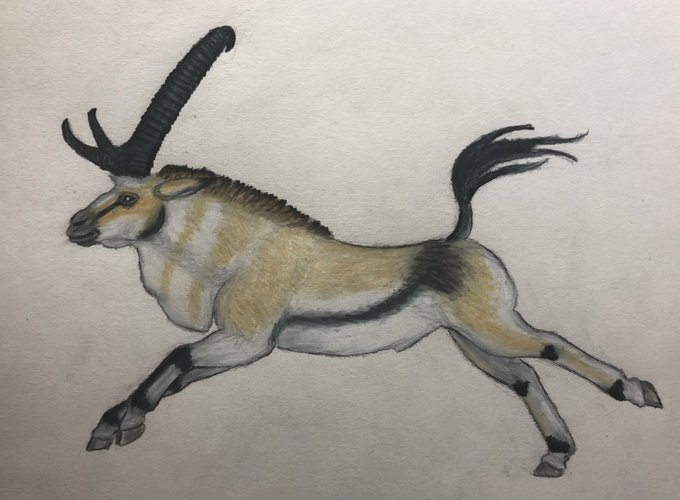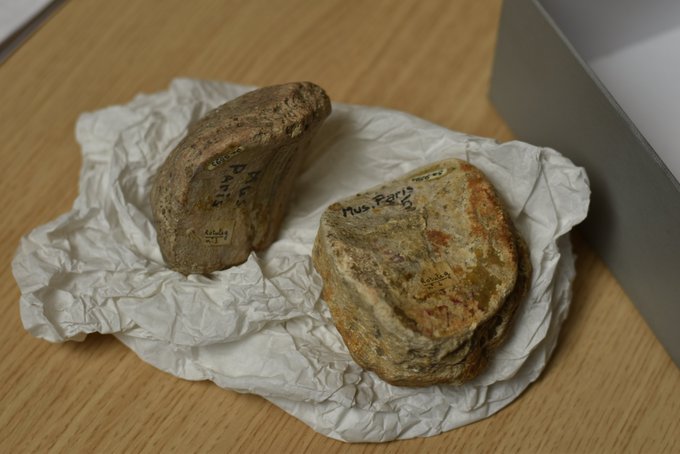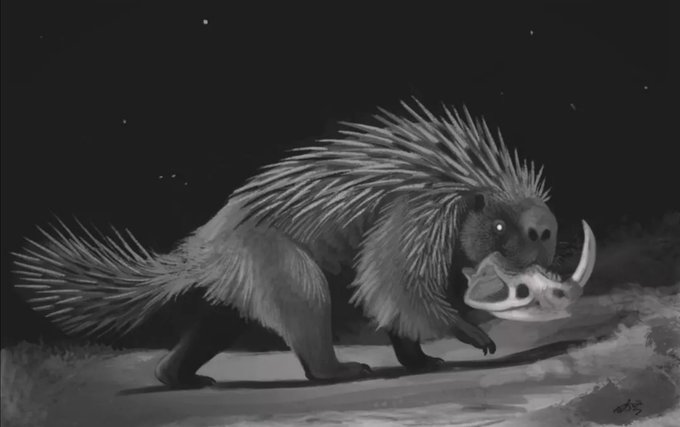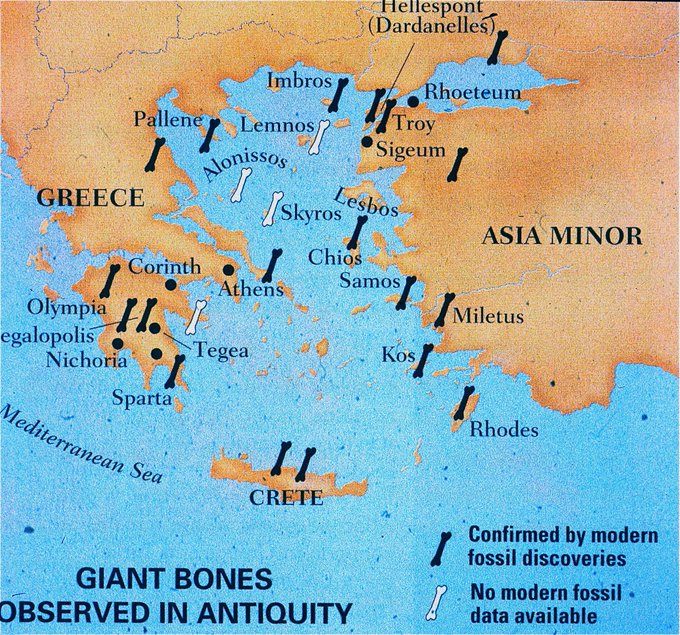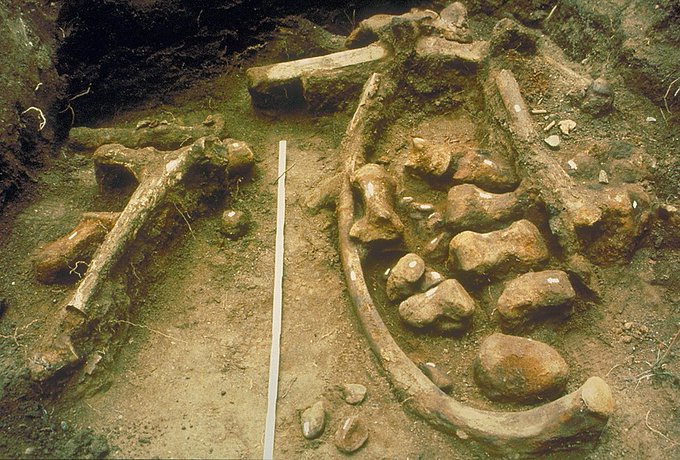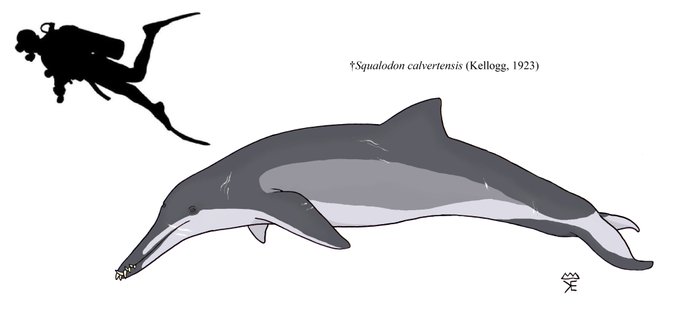MioceneのTwitterイラスト検索結果。 148 件中 3ページ目
Pronghorns came to Kaimere in two waves: middle and late Miocene. The first wave has the most diversity in the known world (forest and prairie taxa), but the clade of the second that includes the modern common pronghorn is much more diverse on the Eastern continent.
What is this I'm hearing about a pachycephalosaur-like giraffid from the Miocene, apparently with even more adaptations to headbutting than bighorn sheep and the like, and why haven´t I seen any pictures of it breaking a predator's ribs? :B #Discokeryx
My first #FossilFriday! Back for a day at @Le_Museum in Paris to 3D scan patellas of the chalicothere Anisodon from the Miocene site of Sansan. Upcoming study on the shape variation of patella in perissodactyls within the #Gravibone project with @HoussayeCnrs 🦏🐘🦕🦖
@fazfacts_ while people are screaming at each other on that post, did you know that Platybelodon ("flat-spear tusk") was a genus of large herbivorous mammals related to the elephant (order Proboscidea). It lived during the middle Miocene Epoch in Africa, Asia and the Caucasus.
The ailurines are the third group of ailurids that appeared in Middle Miocene epoch. The earliest members were raccoon-like omnivores that were found in North America, Eurasia and Africa. Only the genus Ailurus, the #RedPanda is the sole extant member of Ailuridae with 2 species.
I switched the human out here for a Pliobates, a gibbon relative from the Miocene of Spain, without a large tree nearby it's going low to not get the attention of the Deinotherium near by.
Xenokeryx amidalae, “Amidala’s strange horn”, lived in what is now Spain during the Miocene around 16mya. It’s most well known for it’s four bizarre ossicones, including a unique T-shaped structure near the back of the skull.
#marchofthemammals2022
[#Geodiversitas] Skeleton of Early Miocene Bathyergoides neotertiarus Stromer, 1923 (Rodentia, Mammalia) from Namibia: behavioural implications
🔗 https://t.co/KvvYeyTHGs
✒️ Laura BENTO DA COSTA & BRIGITTE SENUT
#FossilFriday #Miocene #Rodentia #Mammalia #Paleontology
South American Pacific coast during the Late Miocene. A large Otodus megalodon approaches a pod of Odobenocetops leptodon, a tusked cetacean, and a group of the large penguin Spheniscus urbinai
In 2011, a giant salamander from the Miocene of what is now the Grytsiv locality of Ukraine was given the name "Ukrainurus hypsognathus". The authors of the paper note that despite it having relatively inflexible jaws, it wouldve had in incredible bite force!
#IStandWithUkraine
New: @mickbisconti et al. – Archaebalaenoptera eusebioi, a new rorqual from the late Miocene of Peru (Cetacea, Mysticeti, Balaenopteridae) and its impact in reconstructing body size evolution, ecomorphology and palaeobiogeography of Balaenopteridae https://t.co/hltarxk0vx
For #FossilFriday this awesome mandible of the feline Styriofelis from the Middle #Miocene site of Príncipe Pío-2 (#Madrid) studied by @Gamarraptor on his Master Thesis #Palaeontology #Felidae @Gemmula @MAntonPaleoart
Another prehistoric creature I have never seen drawings of, the giant Miocene porcupine Neosteiromys from South America! It was largely terrestrial and in the same size range as living African porcupine! Here seen carrying a nice skull to gnaw on for dental health and minerals :B
Rimasuchus seems to have bit off more than they can chew, Zygolophodon is not happy. Early Miocene Egypt #paleoart
Preparing the 3D print models for #AgateContest! Reminder, to win one of these you have to create an artwork depicting miocene nebraska and submit online with this hashtag before January first!
New: Vera, Scarano & Reguero – A new Interatheriinae (Mammalia, Notoungulata) from the Cerro Boleadoras Formation (Santa Cruz, Argentina) and the evolution of the tarsus within the lineage during the Miocene https://t.co/DB3huHvCvd
As a last point, sad no doubt to some, it must be pointed out that Bullockornis, the 'Demon Duck of Doom', died out in the Miocene, and thus many millions of years before any human set foot on Australia.
How did ancient Greeks interpret large, unfamiliar Miocene-Pleistocene fossils around the Aegean?
#FossilFriday
A pair of Paleoart reconstructions: Telmasaurus and Squalodon.
Telmasaurus was a medium sized basal Varanoid (a stem-Monitor lizard if you will) from the Late Cretaceous Flaming Cliffs of Mongolia. Squalodon is a macropredatory Platanistoid whale from the Oligocene and Miocene.


